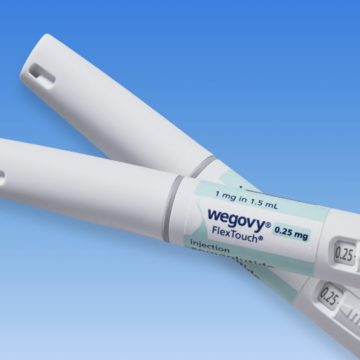Have you heard of ‘Oatzempic’? It’s a weight loss trend that claims to help you lose weight naturally in the same way that Ozempic — the drug it’s named after— does. Some people say they both cause rapid weight loss, but what does the science say? Is it possible to get the same results from natural ingredients that you get from cutting-edge weight management treatments?
Let’s debunk the myths around foods promoting weight loss and help you get the best results possible.
What is GLP-1?
GLP-1 stands for glucagon-like peptide-1, which is a hormone that naturally occurs in your body. It’s released in response to you eating food, and it encourages insulin secretion, which lowers your blood sugar levels. GLP-1 also slows the release of glucagon, a hormone that increases blood glucose.
What are GLP-1 receptor agonists?
GLP-1 receptor agonists are, simply, medicines that mimic the action of GLP-1 in your body. They were originally developed as diabetes drugs, as they help with blood sugar regulation in people with type 2 diabetes.
Now, GLP-1 agonists are used to help support weight loss. They have a number of beneficial effects that help you achieve and maintain a healthy weight, including:
- Greater blood sugar control: Because GLP-1 agonists trigger the release of insulin, they prevent your blood sugar from spiking, which keeps hunger pangs and food cravings at bay.
- Slower gastric emptying: GLP-1 agonists have been found to slow the rate your stomach empties after eating, making you feel fuller for longer.
How does food trigger GLP-1 release?
When you eat foods high in soluble fibre — found in fruits, vegetables and whole grains like oats — your digestive system breaks them down into short-chain fatty acids. These fatty acids then signal to special cells in your pancreas to release the GLP-1 hormone. Increasing GLP-1 levels helps control your blood sugar and reduce your appetite.
Foods that may affect your GLP-1 levels
Whether you’re using a weight management medication or not, it’s beneficial to eat a healthy diet rich in foods that naturally increase GLP-1 concentrations in your blood. Studies recommend avoiding ultra-processed foods and focusing on nutrient-dense whole foods, including:
- Whole grains: Oats and brown rice are fibre-rich, which can trigger the release of GLP-1. They’re also good sources of slow-release energy, which helps keep your blood sugar stable.
- Legumes: Chickpeas, beans and lentils are high in fibre and protein, which may help control your blood sugar and boosts gut health.
- Fruits, vegetables and leafy greens: High in fibre and micronutrients, helping regulate blood sugar and improving overall health.
- Eggs: High in protein and monounsaturated fats, which promote GLP-1 secretion and help you feel full.
- Healthy fats: Nuts and healthy oils contain monounsaturated and polyunsaturated fats, which helps with hormone production and GLP-1 release.
Can Oatzempic help you lose weight?
Let’s return to Oatzempic. We’ve discussed that oats are high in fibre, but some people claim this ‘miracle drink’ — a blend of oats, water and lime juice — triggers a comparable GLP-1 response to Ozempic and other GLP-1 agonists. So, does it?
In short, no. Although fibre may naturally encourage GLP-1 secretion, this oat drink won’t have comparable results to a clinically proven medication.
What’s more, Oatzempic is promoted as a meal replacement, which won’t lead to healthy weight loss. In fact, restrictive fad diets can often increase cravings. You’ll see the best weight loss results from eating a balanced diet rich in protein, carbohydrates, dietary fats and a range of micronutrients. Combine that with regular exercise and you should start to see your weight loss efforts pay off.
Need some extra weight loss support? Find out what treatment is suitable for you on our website.



